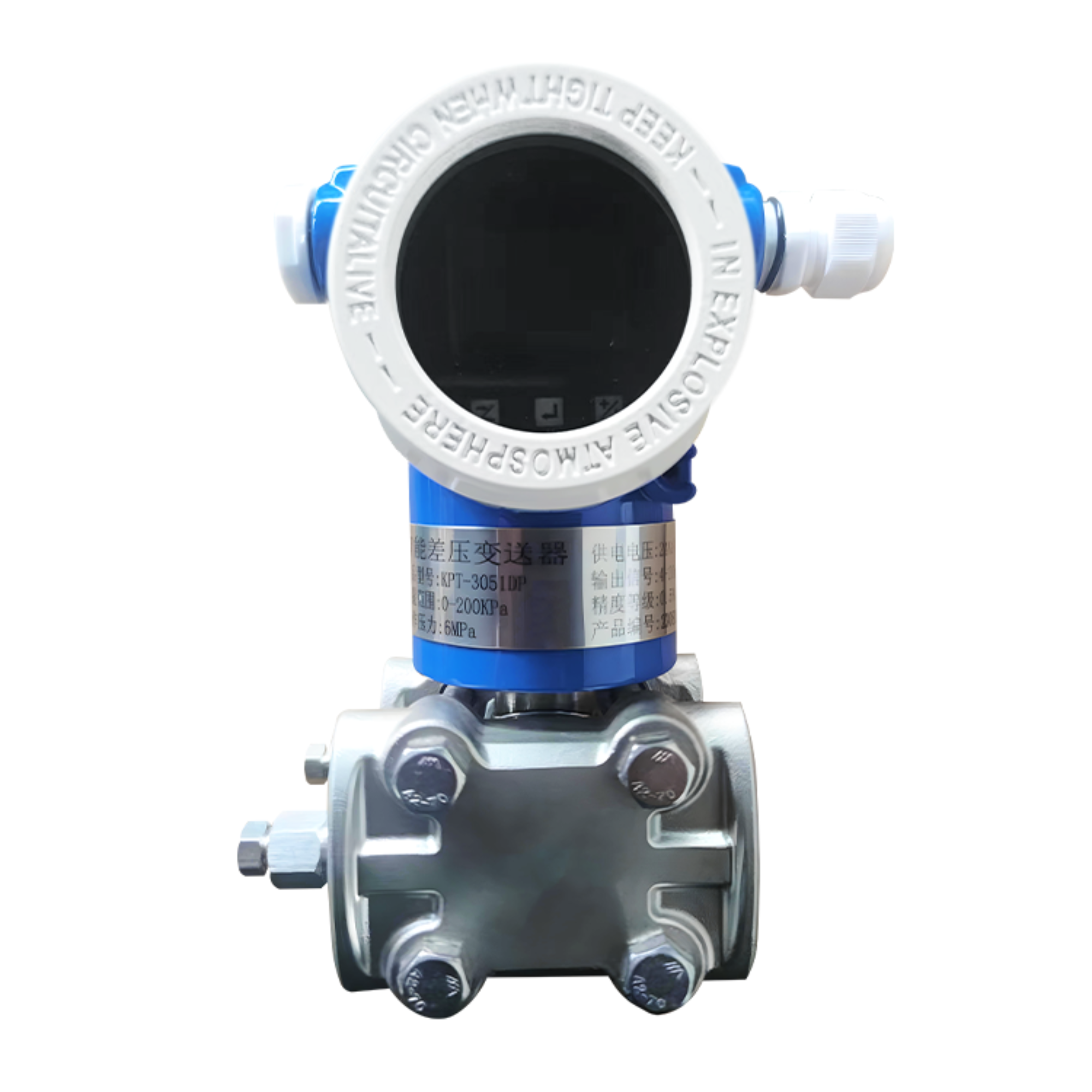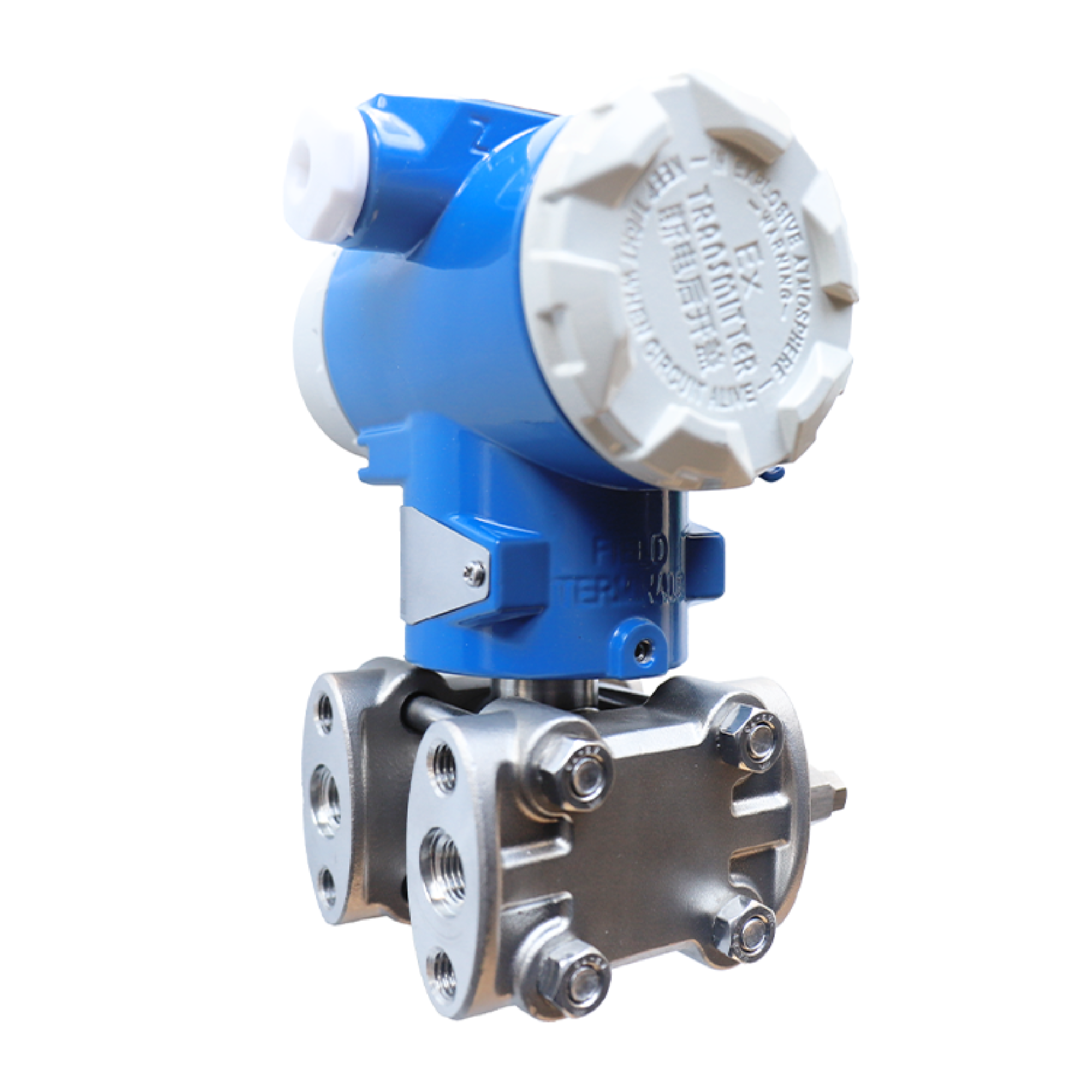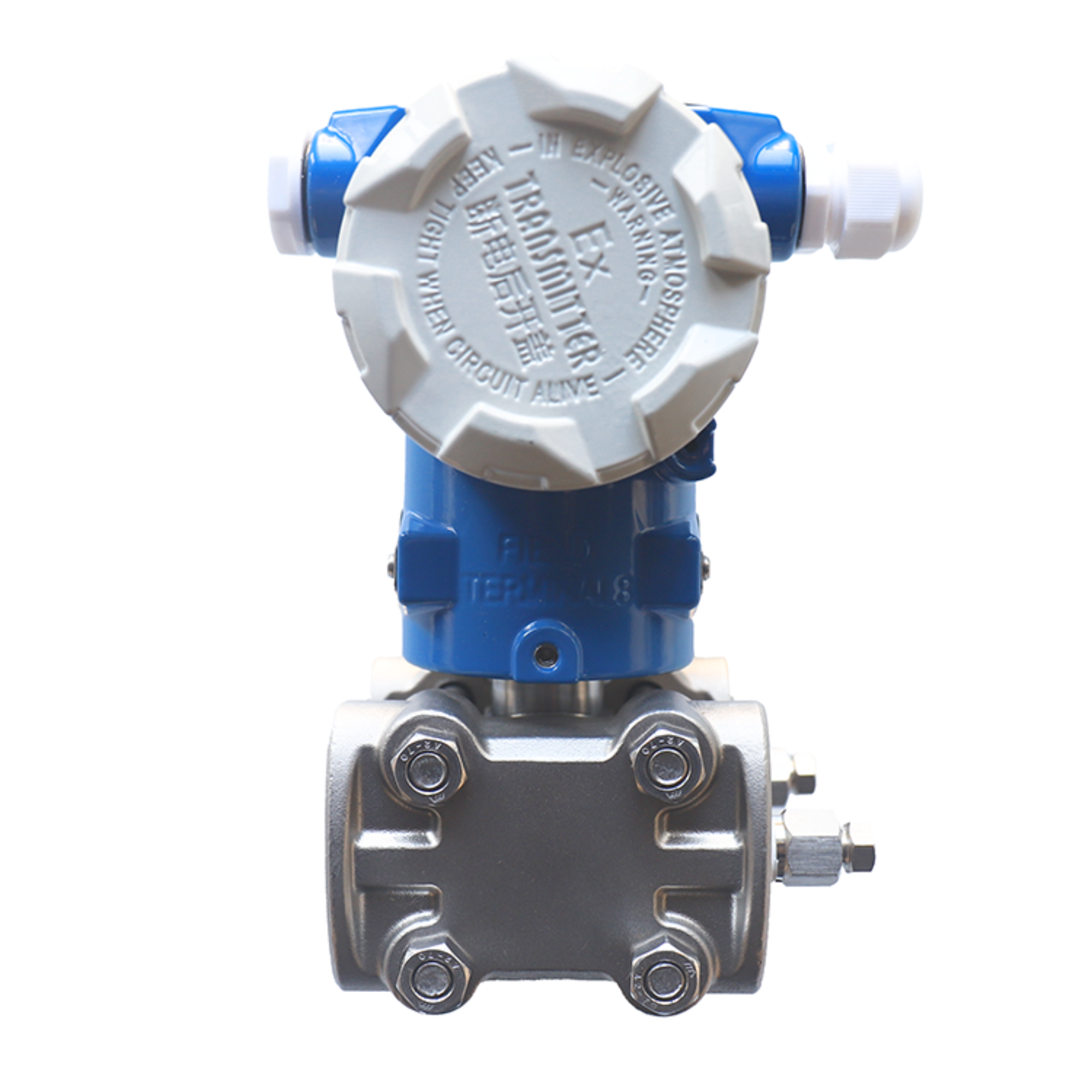ອຸປະກອນວັດທະມົນຄວາມເພີ່ງແຍກຕ່າງກັນໃຊ້ໃນອຸປະກອນອື່ນໆທີ່ເຊື່ອມໂຍງກັບທໍລະຫຼວງທີ່ເຮັດຈາກນ້ຳ ແລະ ອິດສະຫຼະນິການວັດທະມົນຂຶ້ນສູງ. ການຄຸ້ມຄອງການນຳໃນສະຖານທີ່ເຄື່ອນໄຫວ, ປະເທດນ้ำມັນ, ແລະ ການຜະລິດອື່ນໆ ມີການເຮັດວຽກໂດຍອຸປະກອນເຫຼົ່ານີ້ ເຊິ່ງບໍ່ສາມາດເຮັດໃຫ້ມີຄວາມສຳເລັດສູງໃນການຜະລິດໄດ້ຖ້າບໍ່ມີ. ທີ່ກັບກັນ ຄວາມເພີ່ງແຍກຕ່າງກັນຂອງສອງຈຸດໃນທໍລະຫຼວງ ອຸປະກອນຈະຄຸ້ມຄອງຄວາມເວົ້າວົງຂອງນ້ຳຫຼືການເຄື່ອນໄຫວໃນທໍລະຫຼວງ. ໃນຫຼາຍກໍລະນີ ອຸປະກອນເຫຼົ່ານີ້ວັດທະມົນຄວາມແຂງຂອງນ້ຳຫຼືກາສທີ່ຖືກກັບກັນກ່ອນທີ່ຈະສະແດງກັບອົງປະກອບທີ່ເປັນອັງການເຊັນ ເປັນຕົວຢ່າງ ວັນຫຼືເປັນເປັນ. ຫຼັງຈາກນັ້ນ ຄ່າຂອງຄວາມແຍກຕ່າງນີ້ແມ່ນຄວາມວັດທະມົນທີ່ສະເໜີວ່າ ຄວາມເວົ້າວົງຂອງສ້າງທີ່ໜຶ່ງແລະສ້າງທີ່ສອງເຄື່ອນໄຫວກັນ. ເປັນທີ່ສັງເກດຈາກການລົງທືນ ບໍ່ມີອຸປະກອນວັດທະມົນຄວາມເພີ່ງແຍກຕ່າງກັນ ບໍ່ສາມາດວັດທະມົນການນຳໄດ້ຖືກຕ້ອງ. ເນື່ອງຈາກເຫດນີ້ ການຜິດພາດ ແລະ ການບໍ່ສົງສິນໃນຄ່າ ແລະ ການວັດທະມົນ ລົງທືນສຳເລັດແລະອັນຕານຕໍ່ການຜະລິດ. ເມື່ອນີ້ມີຫຼາຍປະເພດຂອງອຸປະກອນວັດທະມົນຄວາມເພີ່ງແຍກຕ່າງກັນທີ່ສາມາດໃຊ້ງານໄດ້ ເຊິ່ງແຕ່ລະຄົນມີຄຸນສິດທີ່ແຕກຕ່າງກັນ. ຕົວຢ່າງບາງຄົນມີອຸປະກອນສົ່ງສິ້ນຄ້າທີ່ສາມາດສົ່ງສິ້ນຄ້າໄດ້ ແລະ ມີການວິເຄາະທີ່ສຸກສົມ: ສະເພາະແລະລັດສະດີຂອງມັນເປັນສິ່ງທີ່ສາມາດເຂົ້າໃຈແລະເຂົ້າໃຈ ເມື່ອເຈົ້າຕ້ອງການ, ແລະ ອຸປະກອນເລືອກເປັນສິ່ງທີ່ສຳຄັນເມື່ອເຈົ້າຕ້ອງການ. ໃນກໍລະນີນີ້ ເປັນໜຶ່ງຂອງ MCU ເຊິ່ງມີສອງລັດສະດີທີ່ຍິ່ງທີ່ສຸດ ເຊິ່ງມີຄວາມແກ່ນແລະຄວາມສຳເລັດ – Eja ແລະ 3051S.
ເມື່ອທ່ານຍ້າຍໄປยັງພື້ນທີ່ສ້າງ, ການປິດລົງຂອງພື້ນຖານການປະເມິນສາມາດເປັນຫົວຂໍ້ທີ່ຫຼັກຫຼາຍ ກັບການສູญເສຍຄວາມມີຄວາມສຳເລັດແລະຄວາມມີຄວາມສຳເລັດຂອງການຜະລິດ. ການລົ້ມເຫຼວຂອງລະບົບເຫຼົ່ານີ້ໃນສະຖານະສະຖິຕິຈຳເປັນຈະເຮັດໃຫ້ມີການປິດລົງຂອງພື້ນຖານການປະເມິນຫຼາຍຄັ້ງ ເນື່ອງຈາກການລົ້ມເຫຼວຂອງອຸປະກອນ, ຕໍ່ເປັນພິເສດທີ່ມີການສຳພັນກັບການນຳເອົາຫຼືການນຳເອົາການນຳເອົາ.
ເພື່ອປ້ອງກັນການປິດລົງຂອງພື້ນຖານການປະເມິນ, ການວັດແທການຕຳຫຼວງຄວາມດຸນ (ຫມູ່ສົມບູນ) ໃນເວລາທີ່ຈິງຈ້າຍ ໄດ້ຖືກນຳມາໃຊ້ ເນື່ອງຈາກ utorog ທີ່ເກີດຂຶ້ນໃນການປ່ຽນແປງ ແລະ ການແກ້ໄຂ. ອຸປະກອນເຫຼົ່ານີ້ສາມາດກວດກາບຄວາມແຕກຕ່າງຂອງການນຳເອົາທີ່ຕ່ຳຕໍ່ໄປຢ່າງທັນທີ່ ໂດຍໃຊ້ການຕຳຫຼວງຄວາມດຸນເພື່ອກວດກາບການປ່ຽນແປງ ແລະ ສົ່ງສິ້ງເຕືອນທັນທີ່ ໃຫ້ຜູ້ປະຕິບັດສາມາດແກ້ໄຂບັນຫາກ່ອນທີ່ມັນຈະເກີດ.
emás, ໂລດທີ່ສຸດຊົນກວ່າເປັນຕົ້ນວ່າ Rosemount 3051S ແລະ Yokogawa EJA series ມີຄວາມສາມາດໃນການວິເຄາຫະທີ່ພົບເຫັນກ່ອນທີ່ຈະເກີດຂົນຜິດພາດຂອງອຸປະກອນ. ໃນແນວນີ້, ທ່ານສາມາດປ້ອງກັນສະຖານະທີ່ບໍ່ຕ້ອງການໄດ້ກ່ອນທີ່ຈະເກີດໂຫຍຸ່ງຢາງ ໂດຍການແກ້ໄຂບັນຫາກ່ອນທີ່ມันຈະເປັນຈົນເປັນບັນຫາ - ທີ່ຈະສູ້ມຫຼັງເວລາເຮັດວຽກບໍ່ຖືກຕາມແຜນແລະຍືນຍຸງອາຍຸຂອງອຸປະກອນ.
ໃນທຸກສະຖານະ, differential pressure transmitters ແມ່ນອຸປະກອນນ້ອຍທີ່ຕັ້ງຢູ່ເພື່ອຄວບຄຸມ ຫຼື ລົງທະບຽນການນຳຂອງນ້ຳ ໄດ້ຖືກຕັ້ງຄ່າໃຫ້ມີຄວາມຖືກຕ້ອງສູງສຸດໂດຍການໃຊ້ເทັກນົໂລຊີ້ທີ່ມີຄວາມໜຶ່ງແຫ້ງ. ສາຍເທັກນົໂລຊີ້ແມ່ນການວັດຄວາມແຕກຕ່າງຂອງຄວາມດັ່ງໂດຍໃຊ້ capacitance ແລະ piezoelectric sensors.
ເຊື່ອສະແດງຄວາມຫຼຸດ - ເຊື່ອສະແດງເຫຼົ່ານີ້ເຮັດວຽກຕາມປະທັ antioxidizing ຂອງຄວາມແຕກຕ່າງຂອງຄວາມຫຼຸດໄພສະເພາະລະຫວ່າງສອງປາຍທີ່ມີຄວາມສັນຍາເຊິ່ງ. ເຊື່ອສະແດງຄວາມຫຼຸດຄາບທີ່ຕ່າງກັນມີປາຍທີ່ມີຂະໜາດຕ່າງກັນ, ແລະຄ່າງຫ່າງຈົນປາຍເຫຼົ່ານີ້ຈະແປງໄປຕາມຄວາມຫຼຸດທີ່ຖືກສົ່ງ; ນີ້ແປງຄວາມຫຼຸດທີ່ສາມາດຖືກວັດແຈງໄດ້ໃນຄັ້ງຄັ້ນແລະແປງເປັນຄວາມຫຼຸດທີ່ຖືກການເຮັດໃຫ້.
ພວກເຂົາເຮັດວຽກໃນແນວທີ່ເຊື່ອສະແດງ piezoelectric ສຳເນົາຄວາມແປງຂອງຄວາມຫຼຸດໄພເມື່ອເປັນການແປງຮູບແຫຼືກຸ່ມເສັ້ນສາ. ມື້ໝາຍ piezoelectric ກຳເນີດຄວາມຫຼຸດໄພເມື່ອຄວາມແຂງຖືກສົ່ງໄປຫາພື້ນໜ້າຂອງພວກເຂົາ, ແລະນີ້ສາມາດຖືກສົ່ງໄປໃນການອ່ານຂອງຈຳນວນຄວາມແຂງທີ່ເປັນ.
เทคโนโลยีความจุและเซนเซอร์พิวโซอิเล็กทริกเป็นที่นิยมในอุตสาหกรรมเนื่องจากมีความแม่นยำสูงและความน่าเชื่อถือ ซึ่งตอนนี้ได้กลายเป็นส่วนหนึ่งที่ขาดไม่ได้ในชีวิตประจำวันของเรา การเข้าใจด้านเทคนิคของเครื่องวัดความดันแตกต่างกัน ผู้ปฏิบัติงานสามารถควบคุมอุปกรณ์เหล่านี้ได้อย่างง่ายดายและใช้งานให้เกิดประโยชน์สูงสุด
หากคุณต้องการทราบข้อมูลเพิ่มเติมและสนใจ เพียงแค่พิมพ์ว่า เครื่องวัดความดันแตกต่างแบบไร้สายได้รับการปรับปรุงอย่างไรเมื่อเทียบกับเวอร์ชันแบบมีสายแบบเดิม แก้ไขปัญหามากมายในอุตสาหกรรมกระบวนการ ระบบวัดแบบไร้สายช่วยหลีกเลี่ยงปัญหาเรื่องสายเคเบิลที่ซับซ้อนและยืนยันว่ากระบวนการของคุณจะทำงานตลอดเวลา
ຫຼັງຈາກນັ້ນ, ເຄື່ອງສົ່ງສິ້ນຄ້າເວົ້າລະຍູທີ່ມີຢູ່ໃນມື້ນີ້ ກໍ່ໄດ້ຊ່ວຍໃນການໂປຣແກຟິກຂໍ້ມູນສຳຄັນ ແລະ ການຕິດຕາມຈາກຫ່າງไกล ທີ່ບໍ່ຕ້ອງໃຫ້ຜູ້ປະຕິບັດມາໜ້າກັບຄວາມເປັນອັນตรາຍ. ອຸປະກອນເວົ້າລະຍູເຫຼົ່ານີ້ ບໍ່ສາມາດໃຊ້ງານໃນພື້ນທີ່ທີ່ມີຄວາມສຸກສາມສູງ ແລະ ມີຄວາມສົງຄາມ ໃນການສົ່ງສິ້ນຄ້າທີ່ມີຮູບແບບຝິສິກາ ແລະ ສາມາດເປັນຄວາມສຸກສາມໃນການວັດແຖວທີ່ມີຄວາມຍາກຫຼາຍ ຫຼື ອັນຕະລາຍ.
ເຄື່ອງວັດຄວາມດັບສູງ-ຕ່ຳເວົ້າລະຍູ ໄດ້ຖືກໃຊ້ໃນຫຼາຍການປະຕິບັດ ໄດ້ແກ່ ການຕິດຕາມຄວາມເຄື່ອນໄຫວໃນສາຍການປະมวลຜົນເຄື່ອງມືເຄື່ອງເຄື່ອງ (chemical processing plants), ການສະແດງສະຖານະຂອງແຟື້ນແລະປື້ມ; ການສຸກສາຄວາມດັບໃນສາຍການປະມານນ້ຳ (water treatment facilities) (ຈາກການຮັບນ້ຳເຂົ້າ ໄດ້ແກ່ ການແຍກແຕກ ແລະ ການສຸກສາໃນຫຼາຍສາຍ); ແລະ ການວັດລະດັບຂອງແຖວ/ສາລູ ໂດຍມີການສະແດງຜົນລັບທີ່ທີ່ໆ ແລະ ຄວາມຖືກຕ້ອງສູງ.
ຫຼັງຈາກສົນຄວນ, ທ່ານເຊື່ອມຕໍ່ກັບຄວາມດິນແທນຂອງຄວາມເປັນພື້ນຖານແມ່ນສຳຄັນທີ່ຈະໃຊ້ງານໃນສ່ວນຫຼາຍຂອງຄວາມຮູ້ແລະຄວາມສາມາດຂອງອຸດິດສາດເພື່ອວັດແທການເຄື່ອນໄຫວຂອງນ້ຳແລະການເຄື່ອນໄຫວຂອງການເຄື່ອນໄຫວ. ດ້ວຍການຮູ້ຈັກການເຮັດວຽກຂອງອຸປະກອນເຫຼົ່ານີ້, ທ່ານຜູ້ດູແນກໍາລັງສາມາດເລືອກອຸປະກອນທີ່ຖືກຕ້ອງສຳລັບການເຮັດວຽກເປັນພິเศດ, ເພີ່ມຄວາມສຳເລັດຂອງການຄຸ້ມຄອງໂປເຊັສຂອງທ່ານໂດຍບໍ່ມີຄວາມສູญເສຍທີ່ສິ່ງທີ່ເປັນຄ່າ用.
ມີເຄື່ອງວັດຄວາມເປັນພິດຫຼາຍປະເພດໃນຊ້າງທີ່ມີຄຸນສິດແລະຄຸນສິດທີ່ແຕກຕ່າງກັນ. ເຄື່ອງວັດບາງຄັ້ງມີຄວາມສົມບູນກວ່າແລະສັງຄົມກັບການສົນທະນາດິຈິຕ້ານ, ມອນິໂຕຣິງຫ່າງຫາ, ຫຼືວິທິຍາທີ່ເຂົ້າກັບ.
ເມື່ອເລືອກຕັ້ງສົ່ງຄ່າແຍກຂອງ, ບັນຫາຂອງອະນຸກຳລັງໃຊ້ແລະສະພາບແວດລ້ອມຄວນໄດ້ຮັບການເປີດເຜີຍ. ການແນະນຳຂ້າງເທິງແມ່ນຄືນຄຸນທີ່ຫຼາຍ, ເຖິງຢ່າງໃດກໍ່ຕາມ ອຸນຫະພູມສູງສຸດ, ຄວາມເປັນຫຼາຍຂອງຄວາມດັບ, ແລະລັດຖະມົນຂອງສູນກາງເອງຈະມີຜົນກະທົບຫຼາຍກັບປະເພດຂອງຕັ້ງສົ່ງທີ່ທ່ານສາມາດຫຼືບໍ່ສາມາດໃຊ້.
Rosemount 3051S ແລະ Yokogawa EJA series ແມ່ນສອງລົດຂອງລົດທີ່ແນະນຳທີ່ມີຄວາມແນວຫຼາຍ, ຄວາມຖືກຕ້ອງສູງແລະຄວາມສັງຄົມ. ຕັ້ງສົ່ງເຫຼົ່ານີ້ມີຄວາມສາມາດໃນການວິເຄາະໂດຍການສົ່ງຄ່າແລະສົ່ງຄ່າ, ຜົນກະທົບໃນການວັດທີ່ມີຄວາມສັງຄົມສູງ.

ໃນການປະຕິບັດອຸດົມ, ທີ່ມີການຫຼຸດລົງຂອງການປະຕິບັດrocess ມີຜົນກະທົບຫຼາຍທີ່ສືບມາຈາກຄວາມບໍ່ສຳເລັດແລະຄວາມສັງຄົມ. ການລົ້ມຫຼຸ່ມຂອງອຸປະກອນ, ເປັນພິเศດສຳຄັນທີ່ສືບມາຈາກລະບົບທີ່ຕິດຕາມແລະຄວບຄຸມການນຳເຂົ້າ-ອອກຂອງນ້ຳແລະກາສ, ສະແດງຜົນກະທົບຫຼາຍ.
ເພື່ອປ້ອງກັນບໍ່ໃຫ້ມີເວລາປິດລົງຂອງການປະຕິບັດໃນອຸຕະ按钮 button ທີ່, ການວັດແທກຄ່າແຍກຕ່າງກັນ (i.e., ສົມບັດທີ່ໄດ້ຮັບການອະນຸຍາດ) ຄົບຄວນແລະສູງສຸດໃນເວລາຈິງ. UTOROG ກໍ່ໄດ້ໃຊ້ວິທີນີ້ຢູ່ຫຼາຍເວລາໃນການປະຕິບັດທັງໝົດ. ຕຳຫຼວດນີ້ສາມາດແຈກແຍກຄ່າແຍກຕ່າງກັນຂອງການໂຫຼາດໄດ້ແຫວງ ແລະ ອານຸຍາດຜູ້ປະຕິບັດໃຫ້ເຮັດການກ່ອນທີ່ຈະມີບັນຫາເກີດຂຶ້ນ.
ພິນສີ່, ມຸ່ງໝາຍທີ່ສູງກວ່າ ເຊັ່ນ Rosemount 3051S ແລະ Yokogawa EJA series ສາມາດມີການວິເຄາະທີ່ດີກວ່າ ເພື່ອຄົ້ນຫາການລົ້ມເຫຼວຂອງອຸປະກອນ. ດັ່ງນັ້ນ, ບຸກຄົນສາມາດປ້ອງກັນບັນຫາທີ່ບໍ່ຕ້ອງການ ແລະ ການແກ້ໄຂບັນຫາກ່ອນທີ່ຈະເປັນບັນຫາທີ່ແທ້ຈິງ - ເຖິງການຫຼຸດນ້ອຍຂອງເວລາປິດລົງທີ່ບໍ່ໄດ້ລົງທະບຽນ ແລະ ອາຍຸຂອງອຸປະກອນທີ່ຍາວຂຶ້ນ.

ບໍ່ວິທີກະສັງ, ທາງເພີ່ມຄວາມແຕກຕ່າງແມ່ນສ້າງປະກອບລະຫວ່າງທີ່ໃຊ້ເทັກໂນໂລຈີຂົນສຸດສະຫຼາດເພື່ອຄຸ້ມຄອງແລະຕິດຕາມການເຄື່ອນໄຫວຂອງນ້ຳຫຼືການເຄື່ອນໄຫວຂອງການເຄື່ອນໄຫວ. ຕົວເທັກໂນໂລຈີທີ່ເປັນຖານກໍ່ແມ່ນເປັນຫຼັກສຸດສະຫຼາດທີ່ໃຊ້ເຊື່ອມໂຍງກັບ ການວັດຄວາມແຕກຕ່າງຂອງຄວາມດູນ.
ເຊື່ອມໂຍງທີ່ວັດຄວາມດູນ - ເຊື່ອມໂຍງເຫ່ນີ້ເຮັດວຽກໂດຍການເຊື່ອມໂຍງຄວາມແຕກຕ່າງຂອງຄວາມສັນພາບທີ່ເປັນໄປໂດຍສອງແຜນທີ່ເປັນໄປໂດຍສົງ. ຄວາມສັນພາບແປງໄປເປັນຫຼາຍເມື່ອຄວາມຫ່າງຂອງແຜນເຫ່ນີ້ແປງໄປ, ເປັນເຫດໃຫ້ຄວາມແປງໄປເປັນຫຼາຍເມື່ອຄວາມສັນພາບແປງໄປເປັນຫຼາຍ.
ການເຊື່ອມໂຍງທີ່ແຕກຕ່າງກັບການເຊື່ອມໂຍງທີ່ວັດຄວາມສັນພາບທີ່ເປັນໄປໂດຍການເຊື່ອມໂຍງຄວາມສັນພາບທີ່ເປັນໄປໂດຍການເຊື່ອມໂຍງຄວາມສັນພາບ. ຖ້າຄວາມດູນຖືກເອົາໄປໃຫ້ເປັນໄປໂດຍການເຊື່ອມໂຍງຄວາມສັນພາບ, ມັນຈະຜົນລົງໃນຄວາມສັນພາບທີ່ເປັນໄປໂດຍການເຊື່ອມໂຍງ.
เทคโนโลยีความจุและเซนเซอร์พิวโซอิเล็กทริกเป็นที่รู้จักกันดีในเรื่องความแม่นยำและความน่าเชื่อถือ ซึ่งทำให้พวกมันกลายเป็นส่วนประกอบที่สำคัญในช่วงกว้างของแอปพลิเคชันทางอุตสาหกรรม การเข้าใจในระดับลึกของเทคโนโลยีเกี่ยวกับทรานส์มิสเซอร์แรงดันแตกต่างกัน ผู้ปฏิบัติงานสามารถพัฒนาการควบคุมอุปกรณ์เหล่านี้และเพิ่มประสิทธิภาพการใช้งานได้สูงสุด

ทรานส์มิสเซอร์แรงดันแตกต่างแบบไร้สายมีการปรับปรุงเพิ่มเติมเหนือเวอร์ชันแบบมีสาย ซึ่งแก้ไขหลายปัญหาในอุตสาหกรรมกระบวนการ การติดตั้งโดยใช้เครื่องมือแบบไร้สายช่วยหลีกเลี่ยงปัญหาที่เกี่ยวข้องกับการเดินสายที่ซับซ้อน ทำให้มั่นใจได้ว่ากระบวนการของคุณทำงานอย่างต่อเนื่อง
ພວນກັບ, ເຄື່ອງສົ່ງສິ້ນໄປເສີນທາງອາກາດຊ່ວຍໃຫ້ມີການຕິດຕາມຈາກລະຫວ່າງແລະສະແດງຂໍ້ມູນທີ່ເປັນຈົນຈຸດໃນການປະຕິບັດວຽກໃຫ້ຜູ້ປະຕິບັດທີ່ຢູ່ไกล. ການໃຊ້ເຄື່ອງສົ່ງສິ້ນໄປເສີນທາງອາກາດນີ້ເປັນທີ່ສົງສະຫຼາຍໃນສະຖານະທີ່ທີ່ມີຄວາມຫຍຸ້ງຍາກຫຼືເສິຍສາຍທີ່ຈະວັດແຈງຄ່າ, ເຄື່ອງສົ່ງສິ້ນໄປເສີນທາງອາກາດເຫຼົ່ານີ້ຈະເຮັດວຽກດີໃນສະຖານະທີ່ມີຄວາມຍາກຫຼາຍ, ໂດຍທີ່ການສົ່ງສິ້ນໄປໂດຍທົ່ວໄປບໍ່ສາມາດເຮັດໄດ້.
ເຄື່ອງສົ່ງສິ້ນໄປຄວາມດັບແຕກຕ່າງກັນໄປເສີນທາງອາກາດເປັນສິ່ງທີ່ສົງສະຫຼາຍສຳລັບການໃຊ້ງານຫຼາຍປະເພດ, ກັບມາຈັກການຕິດຕາມການນຳເສີນໃນເຮືອນເຄື່ອງເຄື່ອງແປງເຄື່ອງເຄື່ອງ, ຫຼືແມ່ນກະທົບຄືນຄ່າສະຖານະຂອງແຟັງແລະປຸ້ມ; ການສຸບສິງຄ່າພິນໃນເຮືອນການປ່ຽນແປງນ້ຳ (ຈາກການຮັບເຂົ້າຜ່ານການແປງເຄື່ອງເຄື່ອງຫຼາຍສະຖານ); ຄວາມສູງຂອງຖົງ/ສິລ໌ທີ່ທ່ານຕ້ອງການສະແດງທີ່ສະເພາະແລະມີຄວາມຖັກຕ້ອງ.
ພວມ ລວມເຖິງ, ຄວາມສ່ຽງໃຊ້ຕົວເຄື່ອນແທນຫຍັງກັບຄວາມດິນແຕ້ ແມ່ນຄວາມຈຳເປັນທີ່ສຳຄັນໃນຫຼາຍການລົງທຶນອຸຕະສາຫະກິດ ເຊິ່ງເຂົ້າໄປສູ່ຄວາມຖືກຕ້ອງແລະສຳເລັດໃນການວັດແຮງຂົນຫນຶ່ງ ແລະການວັດແຮງຂົນການຂອງການ. ດ້ວຍການຮູ້ຈັກວ່າເຄື່ອງມືເຫຼົ່ານີ້ເຮັດວຽກຢ່າງໃດ ນັກເປີດສະເພາະສາມາດແນະນຳໃຫ້ເລືອກໃຊ້ເຄື່ອງມືທີ່ເປັນທີ່ສຸດສຳລັບການເຮັດວຽກທີ່ມີ ແລະ ອຸບັດຕິພາບຂອງການຄົ້ນຫາ.
ຮ້ານອຸດົມ 3000 ເມືອງແມັດ ເສັ້ນສົ່ງສິນຄ້າ 6 ໂຕ, ທີ່ມີ ສິນຄ້າ 40 ຕົວ ແລະ ມົດເບີ 100 ຕົວ. ພະນັກງານທີ່ເຮັດວຽກກັບຜູ້ສົ່ງສິ່ງແຍກຄວາມຫຼຸດ, ອຸປະກອນເສີມ, ຄວາມປ່ອນແປງ, ເມື່ອງ, ເກົາສິ, ປີເຕີ, ແລະການແພດ.
ສິນຄ້າຫຼັກຂອງບໍລິສັດເປັນຜູ້ສົ່ງສິ່ງແຍກຄວາມຫຼຸດ, ຜູ້ສົ່ງສິ່ງແຍກລະດັບນ້ຳ. ຜູ້ສົ່ງສິ່ງແຍກຄວາມຫຼຸດ, ຕົວເລກຄວາມຮ້ອນ, ແລະຜູ້ວັດແທກຄຸນພາບນ້ຳ.
ບໍລິສັດໄດ້ຮັບການສະຫຼະອະນຸຍາດເຊົ່າແມ່ນ ISO9001, CE, SGS SGS, ແລະອື່ນໆ. ອີງຕາມ, ບໍລິສັດມີປະທັມສິດຫຼາຍຄົນ, ເວົ້າໄປຈາກເຊີນແມགເສັ້ນພາບ, ເຄື່ອງວັດຂົນຫຼຸດ, ເຄື່ອງວັດຄວາມເປັນພິດ, ຫຼືອື່ນໆທີ່ໃຊ້ເພື່ອວັດຄວາມເປັນພິດຂອງນ້ຳທີ່ອຸນຫະພູມສູງ, ເຊິ່ງໄດ້ຮັບການคຸ້ມຄອງໂດຍສິດປະທັມສິດຂອງເສີງ.
ມະຫາວິທະຍາลາຍ, ສຶກສາເຄື່ອງວັດຄວາມເປັນພິດທີ່ຖືກຕັ້ງຢູ່ໂດຍເทັກນິໂຄນເປັນລູກຄ້າຫຼັກຂອງພວກເຮົາ. ເຂົາເຫຼົ່ານັ້ນໄດ້ມາໃຫ້ບໍລິການຫຼາຍກວ່າ 20,000 ລູກຄ້າທົ່ວໂລກແລະສູ້ອອກຂາເກົ່າ 60 ຄົນທົ່ວໂລກ
Copyright © Weibao Information Technology (Shanghai) Co,Ltd. All Rights Reserved